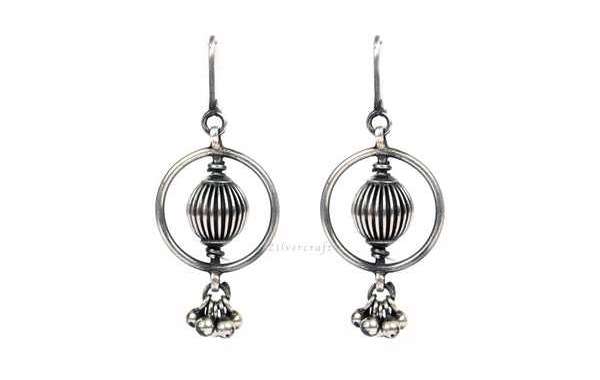When it comes to creating fine art or executing professional projects, the tools you use are just as important as the technique itself. Among these tools, the painting brush holds a pivotal role. It might seem like a simple object, but the choice of brush can greatly influence the outcome of your work. Understanding what goes into selecting the right painting brush is not always as straightforward as it appears, and it’s easy to overlook the finer details. The right brush can elevate your technique, help you express your vision more accurately, and give you greater control over your medium. Conversely, a poor choice might hinder your ability to execute your ideas as intended.
The Importance of Brush Quality and Design
A painting brush’s primary purpose is to transfer paint to a surface, but the materials, shape, and design of the brush impact how well it performs that task. Quality brushes are crafted to hold paint, release it consistently, and allow the artist to manipulate their medium with precision. The bristles, ferrule (the metal band that holds the bristles together), and handle all play critical roles in how the brush feels and functions.
It’s essential to understand that a higher-quality brush doesn’t just offer superior performance, it also helps an artist develop their craft. Cheap brushes often shed bristles, lose their shape quickly, and fail to hold enough paint. These problems can become a distraction, ultimately affecting the artist’s workflow and diminishing the outcome of their work.
In professional settings, the consistency and durability of the painting brush are paramount. Artists who work in large-scale murals or extensive commercial projects need brushes that won’t break down under pressure and can provide consistent results for hours of use. Brushes designed for such work usually feature thicker, longer bristles that provide more surface area and the ability to carry larger quantities of paint.
Brush Types and Their Functions
Not all brushes are created equal, and their shape and structure determine the different types of strokes and textures they can achieve. The type of painting project or technique you’re undertaking will dictate which brush is most suitable.
Flat Brushes: These brushes have a square shape with a flat edge, ideal for bold, sweeping strokes and filling large areas. They are also useful for precise, straight lines and edges.
Round Brushes: These brushes have a pointed tip, making them versatile and suitable for fine details, thin lines, and controlled brushwork. Artists who want to create delicate lines, intricate patterns, or detailing often use these brushes.
Filbert Brushes: A filbert brush combines elements of both round and flat brushes. Its oval-shaped head is versatile, making it ideal for creating soft, rounded strokes. This brush is popular for blending and portraiture.
Fan Brushes: Fan brushes have a unique fan-shaped bristle arrangement. They are perfect for blending, softening edges, or creating texture such as fur, grass, or clouds. They are also used to make specific types of strokes, such as creating dry brush effects.
Angle Brushes: These have bristles arranged at an angle, which allows the artist to create more precise strokes, especially when working on details like corners or edges. Angle brushes are often used for outlining or adding specific effects that require sharp lines.
Mop Brushes: These large, round, and soft brushes are excellent for applying thin layers of paint or washes. They are commonly used in watercolor and fluid painting techniques where control over the paint’s flow is essential.
Detail Brushes: These are smaller brushes designed for intricate work. They are often used in miniature painting, illustration, and fine details like eyes, hair, or small texture work.
Materials of the Brush Bristles
The material used for the bristles of the painting brush influences its performance. Brushes are made from natural hairs (such as sable, hog, or goat) or synthetic fibers. Both have their unique properties that cater to different needs.
Natural Hair Brushes: Sable is considered the gold standard for watercolor brushes due to its ability to hold a large amount of water. Hog bristles are stiffer and more suitable for oil and acrylic paints. Natural bristles are more durable and offer a softer, more resilient feel, making them ideal for artists looking for consistency in their strokes.
Synthetic Brushes: These are made from nylon, polyester, or other synthetic materials. They can mimic the characteristics of natural hair brushes, but they tend to be more affordable. While synthetic brushes might not hold as much paint or water as natural brushes, they are commonly used in modern acrylic painting techniques and can be a practical alternative for certain artists.
Choosing the Right Brush for Your Paint Medium
The medium you are working with—whether oil, acrylic, watercolor, or gouache—determines the ideal brush for your project. Each medium has its characteristics, and understanding how the painting brush interacts with your chosen paint is key to achieving the desired effects.
Oil Paints: Oil paints are thick and slow-drying, requiring brushes that can hold a considerable amount of paint. Hog bristle brushes are often preferred for oil painting because they are stiff enough to handle the texture of oil paint and provide the desired strokes for impasto techniques. A flat or filbert brush is often ideal for applying thick layers of paint, while round brushes can be used for finer details.
Acrylic Paints: Acrylics are fast-drying, which means that artists need brushes that can work well with thicker paint but also handle quick-drying techniques. Synthetic brushes are often recommended for acrylic painting because they are durable and can handle the fast application of paint. Brushes with stiffer bristles are also ideal for working with acrylic paints that may dry quickly or require more texture.
Watercolor Paints: Watercolors are much thinner than oils or acrylics and require brushes that can hold and distribute water evenly. Natural hair brushes like sable are favored for watercolor because they can hold a lot of water, allowing for smooth transitions and soft, flowing strokes. The softness of the brush also facilitates the lightness and fluidity needed in watercolor painting.
Gouache: Gouache is similar to watercolor, but it is opaque. Brushes for gouache painting should have the same characteristics as those for watercolor, though they may need to be a bit stiffer to handle the opacity of gouache paint.
Caring for Your Painting Brushes
Caring for your painting brushes is vital to maintaining their longevity and ensuring they perform well over time. Proper cleaning and storage practices will prevent damage and maintain the shape and integrity of the bristles. After each use, clean the brush thoroughly with water (for water-based paints) or the appropriate solvent (for oil-based paints). Avoid letting paint dry on the brush, as this can harden and damage the bristles.
Store brushes upright or in a protective case to prevent the bristles from becoming misshapen. Never store brushes with their bristles facing down, as this can cause the bristles to bend or break.
Understanding the Brush-Artist Relationship
For many artists, the painting brush is an extension of themselves. It becomes an intimate tool, and the way it moves and responds to the artist’s touch is crucial to their work. As such, selecting the right painting brush requires not only technical knowledge but also a personal connection to the tool. The right brush feels comfortable and intuitive, making it easier to express the artist's vision. The relationship between the artist and their brush is often refined over time as they experiment with different types, brands, and materials.
In conclusion, choosing the right painting brush goes far beyond simple functionality. It’s about selecting a tool that enhances the artist's ability to convey their creative vision. Whether you are working on a fine art piece or a professional project, understanding the role that your brush plays will ensure that the medium and your technique work in harmony. By investing in quality brushes and understanding their design, bristle material, and suitability for the medium, you can elevate your painting experience to new heights.








